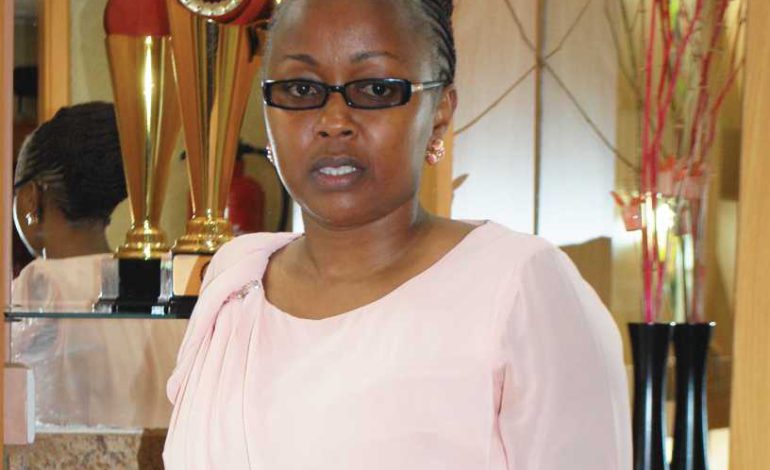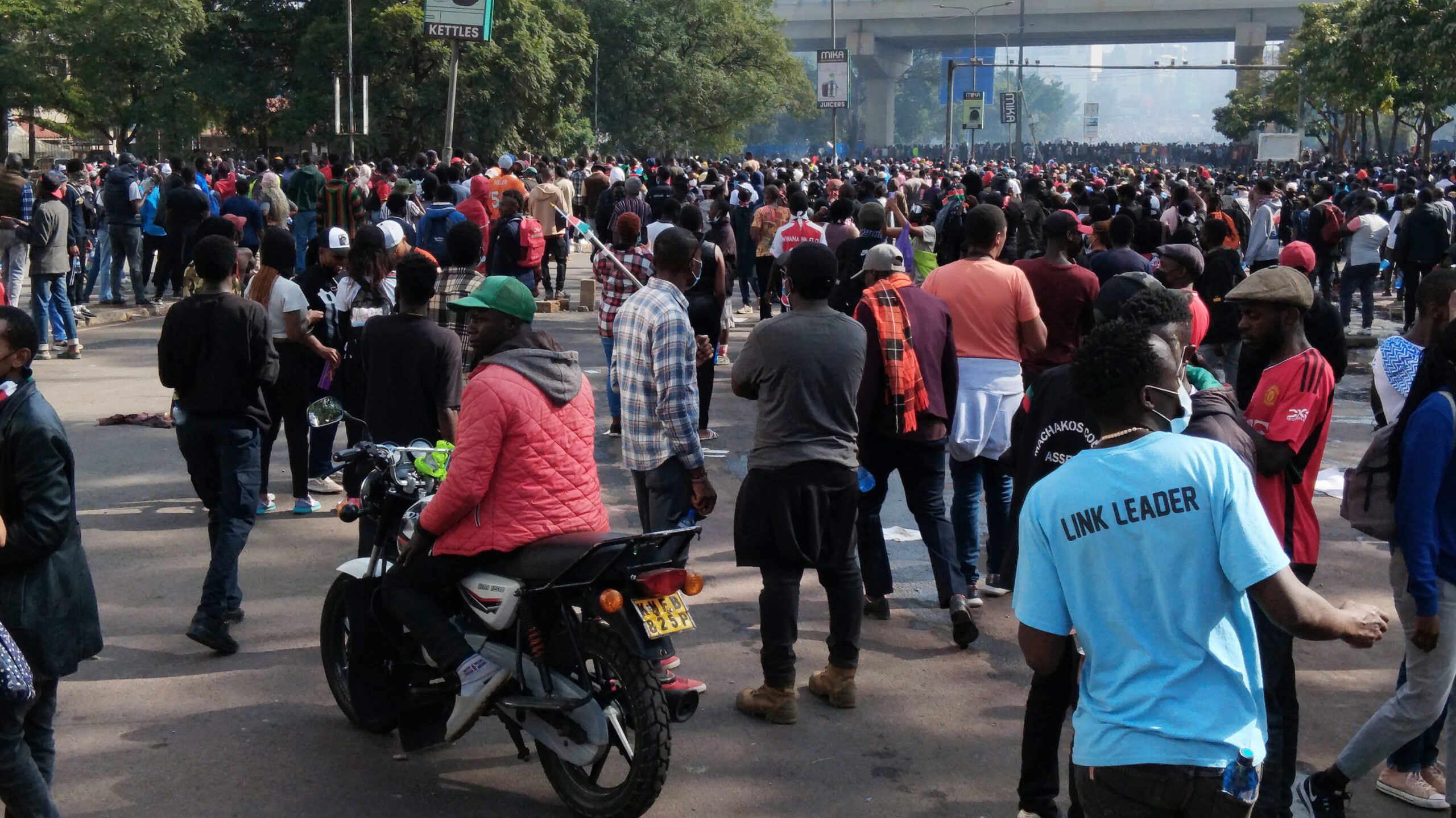ESTHER NYAMBURA Upbeat despite loss of right hand

For eight years, Esther Nyambura Gitau struggled with an illness that refused to go away. Her right hand had to be amputated for her and her family to find peace again. It’s been two-and-a half-years since she went under the knife and she quickly picked up the pieces of her life in a remarkably strong fashion. She speaks to LILY RONOH about her struggle with pain and the price she paid to be pain-free.
Life can be unpredictable. One day you are hobnobbing with the who’s who in the country, the next day you are dining with the paupers. One minute you are alive and the next minute you are gone, forever. You may feel as healthy as a horse but an illness could be slowly eating you up from inside and you only get to know about it when it is too late. And that is just life and when it happens; it either takes us down with it (sometimes literally) or makes us stronger. After all, isn’t it said that what doesn’t kill us makes us stronger?
And that is the situation Esther Nyambura Gitau found herself in 10 years ago. She was only 24, newly married and expecting her first child, and he did come: a bouncing baby boy. Life was good as she reveled in the joys of motherhood and caring for her young family. She had a supportive husband and the only thing they grappled with was finance, which didn’t bother them so much as they could afford the basics: food, shelter and clothing. But an incessant pain on her upper right arm would disrupt the peaceful life they were leading.
“Two years after the birth of my first-born, I started feeling pain on my right hand. I went to Kiambu Hospital where X-rays were done. It detected a growth, prompting the doctor to recommend a magnetic resonance imaging (MRI). Indeed there was a growth, which necessitated a biopsy to determine what exactly it entailed. The tests were taken to Aga Khan University Hospital and after three weeks, the report came out but it was inconclusive as the doctors were not sure whether it was cancer or not. I was asked to do another biopsy,” Esther recalls.
For the young family, the news that it could be cancer shocked them to the core. But since the doctors had not outrightly said it was, they chose to believe that it wasn’t. Her extended family was also convinced it wasn’t cancer and so stopped her from doing another biopsy. Funny enough, after the mass had been removed for testing, the pain seemed to have disappeared and she continued with life unabated. But only for a while for in 2011, the pain recurred but painkillers would take it away, making her dependent on them. However, it reached a point where the painkillers became ineffective and she had no choice but to go to hospital for the biopsy she had initially turned down.
Again, she went through numerous X-rays, scans and MRIs and all showed that there was a growth. But still the tests were inconclusive, as even a biopsy couldn’t tell whether it was cancerous and if it was, it was either chondrosarcoma or osteosarcoma. This necessitated histology to determine the specific kind of cancer she was suffering from.
“If you looked at me then, you couldn’t tell there was anything wrong with my body. Apart from the pain, there was no swelling. After the second biopsy was done and the results coming out inconclusive, again, I gave up and went back home choosing instead to deal with the pain using painkillers. I didn’t even go for the results of the histology. I fell pregnant around the same time and my husband travelled to Afghanistan to work, as the medical bills were really eating into our meagre income,” she explains.
With her husband gone, a toddler to care for and a pregnancy on the way, Esther found life almost unbearable. Hard as it was, she had to accept that her husband had to be away for them to be able to meet the family’s financial obligation. Since a little more mass had been removed during the histology, the pain had subsided but the pregnancy seemed to rouse it. So much so that she had trouble sleeping but she couldn’t take any painkiller because of the pregnancy. She bore the pain alone, as she didn’t want to burden anyone with her troubles.
She gave birth to her second child, a girl, in 2012. And that is when things moved from bad to worse. The pain was excruciating that she couldn’t even breastfeed her child using the right breast let alone use the affected hand to carry out any chores. Luckily, she had a reliable house help who came in handy. She had to put a brave face especially for her children, as she didn’t want to scare them. But she couldn’t hide for long as her right hand started swelling.
“I moved from one hospital to another yet I couldn’t find the answer or medication for the pain. The doctors also wondered why the growth wasn’t spreading as is the tendency with cancerous growths, prompting some of them to conclude it wasn’t cancer. In one of the hospitals, the medics were blank and even asked if the samples could be taken to the Kenya Medical Research Institute (KEMRI) for further research. I didn’t go back,” she explains.
On the other hand, her husband was in a quandary: to stay in Afghanistan and be able to meet the cost of his wife’s treatment or come back home, be without money but be close to his wife. He took the high road reasoning even if he stayed in Kenya, he wouldn’t be able to treat his wife and they would still be without money. However, he would visit every six months with his vacations spent looking after his wife.
Just as they thought they had exhausted all channels, they decided to seek treatment from Kenyatta National Hospital. The first doctor who saw her told her point blank that her hand should have been amputated a long time ago. Aside from amputation, she was to start radiotherapy and chemotherapy immediately. She couldn’t imagine living without a hand and more so the right hand. How was she to take care of her family and business (she was then selling clothes) with only one hand? It was simply unimaginable and she told the doctor as much.
With her mind made up, she went back home. The hand continued swelling that it confined her to the house. She also feared stigmatisation and curious stares from neighbours, friends and strangers. She wished her husband was around but she was alive to the financial obligation that her husband met and thus trudged on bravely. By 2013, the pain had become worse and she went to see an oncologist at Kenyatta National Hospital who recommended a scan of the whole body to determine whether the growth had spread to any other part of the body.
“The doctor was amazed that the growth was confined only on the right hand and he told me I was a very lucky woman. I had been suffering for eight years and my family had neither known joy nor peace since the pain began. My husband’s vacations were spent in hospital as we moved from one to another seeking answers to this illness. I was tired and I wanted to rest. After the scan, another biopsy was done, which showed I had osteosarcoma. I warmed up to the idea of amputation if it would relieve the pain once and for all. My husband was open to any option for as long as I would be healed for good,” she says.
Esther was seeing two doctors: an oncologist and an orthopaedic surgeon. The latter advised they first treat it with radiotherapy to see whether they can manage to preserve the hand. Hence a booking was made only that she would start chemotherapy in 2016! She sought another place to conduct the procedure but after one-and-a-half-months of daily radiotherapy sessions, it was clear it wasn’t working. The hand grew numb, swelled more and burst releasing fluids. It had to go.
And so one afternoon in October 2014, she was wheeled in the theatre in one of Nairobi’s hospitals as her husband boarded a flight home from Afghanistan to be beside his wife as she recuperated from the life-altering surgery. For Esther, she had suffered so much and had come to terms with reality. After three hours, the surgery was done and the journey without her right hand began.
Esther with her husband, Gitau
Her husband landed at Jomo Kenyatta International Airport the following morning and went straight to the hospital. He describes the feeling as awkward as he didn’t know what to tell his wife. To his pleasant surprise, he found his wife seated upright, a bandage on her right side and smiling from ear to ear. This was the icebreaker.
“I stayed in hospital for four days and went home for the wound to heal. It wasn’t easy and for three months, it seemed my life had come to a standstill. My husband had to go back to Afghanistan but not before we agreed that he come home for good after one year. It took time before I got used to being without my right hand and until now, I sometimes feel as if I am flexing my fist. The pain is completely gone, my husband is back home, I am back to my business and life is good, once again,” she says her face lighting up.
After the hand was amputated, it was taken for further analysis and the results showed that the cancer was chondrosarcoma, which doesn’t spread and that explains why the growth was limited to the right arm. As we wind up the interview, Esther shows me pictures of her taken when her right hand was swollen. Looking at the pictures and comparing to her now, it is clear that the illness had weighed her down. Does she consider prosthesis?
“What for? My husband is my right-hand man and furthermore, I have gotten used to using one hand since even before the amputation, I wasn’t able to use my right hand due to the pain,” she says adding that the first thing the family did when she completely healed was to go for a vacation.
Published June 2016




